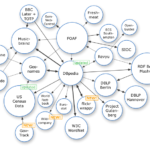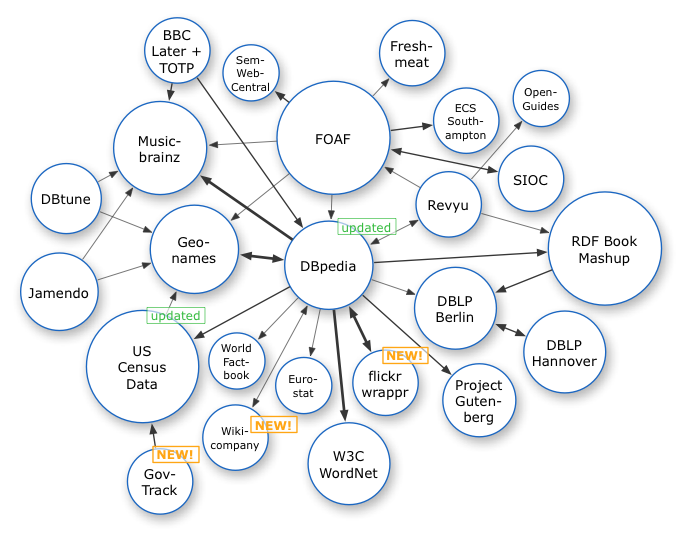Table of Contents
ToggleIn today’s digital landscape, it has become increasingly important for products, personas, and subjects to stand out among the vast sea of online content. One effective way to enhance visibility and improve search engine rankings is through the use of schema markup. If you’re looking to boost your website’s SEO performance, then implementing schema markup is an essential strategy to master. In this blog post, we will provide 15 expert tips for effectively utilizing schema markup to elevate your online presence and drive more organic traffic to your website.
When it comes to optimizing your website for search engines, schema markup can be a powerful tool in your arsenal. From enhancing rich snippets to providing valuable information to search engines, schema markup can make a significant impact on your website’s visibility and performance. However, to truly harness the full potential of schema markup, it’s crucial to understand best practices and leverage it effectively. With our 15 tips, you’ll learn how to implement schema markup like a pro and take your SEO efforts to the next level.
Key Takeaways:
- Schema markup is a crucial component of SEO that helps search engines understand the content on your website and ultimately improve your visibility in search results.
- Utilizing schema markup can help businesses stand out in search results by displaying additional information, such as star ratings, pricing, and product availability.
- By implementing schema markup effectively, businesses can enhance their overall SEO strategy and boost their chances of attracting and retaining organic traffic.
The Basics of Implementing Schema Markup
If you’re new to the concept of schema markup, it’s essentially a code that you add to your website to help search engines provide more informative and relevant results for users. It’s a way to give search engines more detailed information about your products, personas, and subjects. In order to implement schema markup effectively, you need to have a good understanding of the basics.
Types of Schema Markup
One of the first things you need to understand is the different types of schema markup available. There are various types to choose from, including schema for products, personas, events, organizations, and more. Any type of business or website can benefit from implementing schema markup, as it helps search engines understand the content more easily. Importantly, once you’ve chosen the type of schema markup that best fits your content, you can start adding the necessary code to your website. See the table below for a breakdown of five common types of schema markup.
| Type of Schema Markup | Description |
|---|---|
| Product | Used for individual products, including information about price, availability, and more. |
| Personas | Describes people, including their name, biography, and other relevant details. |
| Events | Provides information about events, such as dates, location, and ticket availability. |
| Organizations | Describes organizations, including name, address, and contact details. |
| Local Businesses | Provides information about local businesses, such as address, phone number, and business hours. (a type of Organization Schema) |
Tools for Schema Markup Generation
One important aspect of implementing schema markup is finding the right tools to help generate the necessary code for your website. There are many tools available that can help you create the code for various types of schema markup, making the process much easier and more efficient.
It’s important to choose a tool that is reliable and user-friendly, as well as one that provides updates and support for any changes in schema markup guidelines. With the right tool, you can streamline the process of implementing schema markup and ensure that your website is providing the most relevant information to search engines. It’s worth investing time in finding and utilizing the right schema markup generation tool for your website’s needs. It will ultimately save you time and effort in the long run.
Best Practices for Schema Markup
While implementing schema markup can greatly benefit your SEO efforts, it’s important to follow best practices to ensure that your markup is effective. By following these best practices, you can maximize the impact of schema markup on your website’s search engine rankings and visibility.
Consistency in Markup Across Pages
Across all your products, personas, and subjects, it’s crucial to maintain consistency in your schema markup across all pages of your website. This means using the same schema types and properties for similar content, ensuring that your markup is uniform and accurately reflects the information on each page. Consistency in markup not only helps search engines understand your content better but also enhances the user experience by providing clear and consistent information across your website.
Testing Your Schema Markup
Markup testing is an essential step in ensuring that your schema markup is implemented correctly and is having the desired impact. Testing your schema markup allows you to identify any errors or inconsistencies, and make necessary adjustments to improve its effectiveness. By testing your schema markup, you can ensure that your website is providing search engines with the most accurate and relevant information about your products, personas, and subjects, ultimately improving your SEO performance.
Testing your schema markup is a critical aspect of the implementation process, and it’s important to regularly test and monitor your markup to ensure that it continues to meet the evolving requirements of search engines.
Advanced Tips for Structured Data
After mastering the basics of schema markup, it’s time to delve into advanced tips for structured data. These tips will help you take your SEO efforts to the next level and maximize the impact of schema markup on your website’s visibility in search results.
- Using Schema for Rich Snippets
- Leveraging Multiple Schemas on a Single Page
Using Schema for Rich Snippets
Data markup can be utilized to enhance the appearance of your search results with rich snippets. By implementing schema markup for products, personas, and subjects, you can provide search engines with additional context and increase the likelihood of your content being featured in rich snippets. This can lead to higher click-through rates and improved visibility in search results.
Leveraging Multiple Schemas on a Single Page
Leveraging multiple schemas on a single page can allow you to provide comprehensive and detailed information to search engines about the products, personas, and subjects featured on that page. By utilizing multiple schemas, you can ensure that search engines have a thorough understanding of the content on your page, which can lead to improved rankings and visibility in search results. The use of multiple schemas can also help you target a wider range of keywords and attract more diverse traffic to your website.
The incorporation of multiple schemas on a single page allows for a more nuanced and strategic approach to SEO. By leveraging schemas for products, personas, and subjects, you can create a more comprehensive and holistic representation of your content for search engines, which can result in enhanced visibility and engagement.
Schema Markup for Different Content Types
Not all content types are created equal when it comes to schema markup. Different types of content require different schema markup to effectively communicate with search engines. This is where understanding the nuances of schema markup for different content types becomes crucial for successful SEO.
This chapter will explore the specific schema markup requirements for articles and blog posts, e-commerce and products, events and schedules, and local businesses and organizations. Importantly, understanding how to implement schema markup for each of these content types will help improve search visibility and user engagement.
Articles and Blog Posts
An important aspect of schema markup for articles and blog posts is the inclusion of structured data such as headline, date published, and author. This allows search engines to better understand the content and display rich snippets in search results, making the content more visually appealing and informative for users.
E-commerce and Products
Schema markup for e-commerce and products involves providing structured data for product name, description, price, availability, and review ratings. This helps search engines accurately display product information in search results, leading to higher click-through rates and potential sales.
Articles about e-commerce and products need to prioritize implementing schema markup for product listings, customer reviews, and pricing information to improve search visibility and user engagement.
Events and Schedules
Types of schema markup for events and schedules include structured data for event name, date, location, and ticket information. This allows search engines to display relevant event details in search results, helping users easily find and attend upcoming events.
To maximize visibility and attendance, event organizers and promoters should prioritize incorporating schema markup for event listings, schedules, and ticket information.
Local Businesses and Organizations
Schema markup for local businesses and organizations involves providing structured data for business name, address, phone number, and business hours. This helps search engines display comprehensive business listings in search results, making it easier for users to find and contact local businesses.
Markup for local businesses and organizations are essential for improving local search visibility and driving foot traffic, making it crucial for businesses to prioritize implementing schema markup for their online presence.
Troubleshooting Common Schema Issues
Unlike other aspects of SEO, implementing schema markup can present unique challenges that may lead to errors and issues. Understanding how to effectively troubleshoot common schema problems is essential for maintaining the integrity of your markup and ensuring that your products, personas, and subjects are properly represented in search results.
Identifying and Fixing Errors
To effectively troubleshoot schema issues, it is important to first identify any errors that may be present in your markup. Utilize tools such as Google’s Structured Data Testing Tool to identify specific errors and warnings that may be impacting the performance of your schema markup. Once you have identified the errors, work to resolve them by referencing Google’s guidelines and best practices for schema markup implementation.
Keeping Your Schema Markup Updated
Any effective schema markup strategy should include regular monitoring and updating to reflect changes in your products, personas, or subjects. Keeping your schema markup updated ensures that search engines have the most accurate and current information about your content, which can positively impact your SEO performance. Fixing any inconsistencies or outdated information in your schema markup can help to maintain your authority in search results and improve your overall visibility.
Scaling Schema Markup for Large Websites
Now that we have discussed the basics of schema markup and its importance in SEO, let’s delve into how to effectively scale schema markup for large websites. Implementing schema markup across a website with hundreds or thousands of products, personas, or subjects can be a daunting task, but with the right strategies and tools, it can be done efficiently and effectively.
Automating Schema Implementation
Automating the implementation of schema markup can be a game changer for large websites. There are various tools and platforms available that can help automate the process of adding schema markup to your products, personas, or subjects. These tools can generate and apply schema markup in bulk, saving time and ensuring consistency across your website. Additionally, using data feeds and APIs can streamline the process of updating and maintaining schema markup as your website evolves.
Managing Schema at Scale
Large websites often have dynamic content that is constantly changing, making it crucial to effectively manage schema markup at scale. This includes regularly auditing and updating schema markup to ensure it accurately reflects the products, personas, or subjects on your website. Implementing a robust schema management system can help streamline this process, allowing you to track and monitor schema implementation across your website. This is particularly important for managing schema markup for e-commerce websites, news publishers, and other large-scale platforms with diverse content.
Managing schema at scale requires a strategic approach, leveraging automation and tools to efficiently implement and maintain schema markup across a large website. It is important to stay updated with the latest schema guidelines and best practices to ensure optimal SEO performance.
Measuring the Impact of Schema Markup on SEO
For website owners and SEO professionals, it’s crucial to measure the impact of schema markup on SEO performance. This involves tracking performance using various tools and analyzing search engine results pages (SERPs) to understand the influence of schema markup on search visibility and click-through rates.
Tools for Tracking Performance
To measure the impact of schema markup on SEO, there are several tools available for tracking performance. Google Search Console, for example, provides insights into how rich snippets and structured data are performing in search results. Additionally, third-party tools like SEMrush and Moz offer features for monitoring and analyzing the impact of schema markup on search visibility and organic traffic.
Analyzing Search Engine Results Pages (SERPs)
Performance analysis of search engine results pages (SERPs) is essential for understanding the effectiveness of schema markup in SEO. By examining SERPs, website owners and SEO professionals can gauge the presence and visibility of rich snippets, schema markup, and structured data for their products, personas, and subjects. This analysis helps in identifying opportunities for improving search visibility and attracting more organic traffic.
Conclusion: 15 Tips for Effective Schema Markup in SEO
From above, it is clear that implementing schema markup is crucial for improving your website’s visibility and relevance in search engine results. By following the 15 tips outlined in this guide, you can ensure that your schema markup is effective in conveying the right information to search engines and enhancing your SEO efforts. From choosing the right schema type to making sure your markup is implemented correctly, each tip plays a crucial role in optimizing your website for better search engine rankings.
Overall, mastering schema markup can help you stand out in search results, drive more organic traffic, and ultimately improve the visibility and performance of your website. By staying up to date with the latest best practices and continually improving your schema markup, you can stay one step ahead in the competitive world of SEO.












